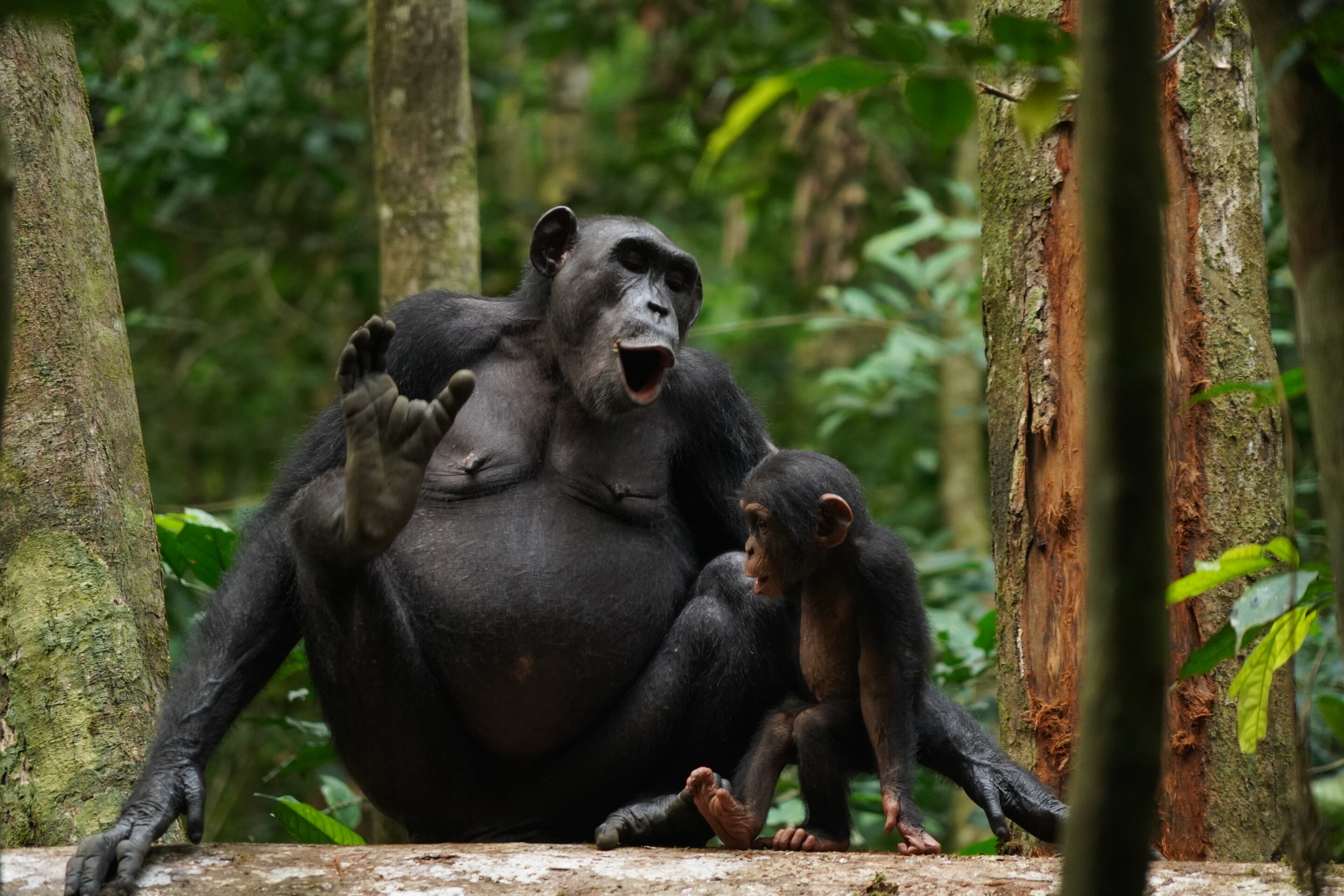Chimpanzee vocalizations reveal a key characteristic of human language 🐵
Follow us on Google News (click on ☆)
Researchers recorded thousands of vocalizations from wild chimpanzees in Taï National Park, Ivory Coast. They analyzed how the meaning of 12 different calls changed when combined into sequences of two calls. This method uncovered striking similarities with human linguistic principles.

Chimpanzees Asanti and Akuna vocalizing. A new study shows that wild chimpanzees use a variety of call combinations to expand their communication.
Credit: Liran Samuni, Taï Chimpanzee Project
The study, published in Science Advances, highlights four ways chimpanzees modify the meaning of their calls by combining them. These combinations include compositional and idiomatic structures, similar to those found in human language. This suggests a more sophisticated communication ability than previously recognized.
Chimpanzees use combinations that add or clarify meaning, as well as idiomatic expressions creating entirely new meanings. This flexibility in vocal communication is unprecedented in the animal kingdom and brings chimpanzees closer to humans in language evolution.
This discovery challenges traditional views of animal communication. Great apes are not limited to fixed expressions tied to emotional states. Their communication system shows a complexity that could shed light on the origins of human language.
How do chimpanzees combine calls to create new meanings?
Chimpanzees use a variety of call combinations to expand their communication repertoire. These combinations can be compositional, where the meaning of individual calls is preserved and combined, or idiomatic, creating entirely new meanings.
This ability to manipulate meaning through call combinations is a key characteristic of human language. Chimpanzees thus demonstrate cognitive flexibility that brings their communication closer to ours.
Research suggests these combinations are not random but follow underlying rules. These rules could reflect a primitive form of syntax, a fundamental element of human language.
This discovery raises questions about the evolution of communication systems. It indicates that the foundations of language may be older and more widespread in the animal kingdom than previously thought.